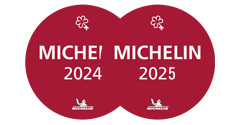Oregon Wine Country Terminology
There’s no good reason to be intimidated by wine, especially in Oregon wine country. Mankind has been making the stuff for thousands of years, well prior to the Scientific Revolution, let alone the internet. That said, wine is ingrained in our culture and because it’s an ever-changing thing, it pays to speak at least a bit of the lingo. Whether you need a second pour in a tasting room (hint: ask to “revisit” a wine) or you want to sound like a pro (Pinot Gris is technically a red-skinned grape, unbeknownst to many), we’ve got you covered. Oregon wine country terminology should be as approachable as the local industry itself. Cheers!
Tasting Terms
- Cork Taint: A spoiled wine, often due to a faulty cork and typically leading to musty aromas (TCA) or vinegary notes (VA). It is estimated to occur in just two percent of wines.
- Lees: Dead yeast particles that tend to accumulate at the bases of barrels and tanks during fermentation. Some wines are aged on the lees to take on additional flavors and texture.
- Legs: The thin trails of wine along the side of your glass after a swirl, which can indicate alcohol content and mouthfeel.
- Pét-Nat: A popular sparkling wine style that predates Champagne and is not disgorged.
- Punt: The dimple at the base of most wine bottles, subject to many theories but most likely there to help the structural integrity of the bottle, displace sediment and make it easier to pour.
- Sabrage: The act of opening a bottle of sparkling with a saber, made famous by Napoleon and easily achieved with a butter knife at home.
Winegrowing Terms
- Appellation: A legally defined and protected region used to identify where certain types of grapes are grown.
- Barrel Regimen: The type of oak used and for how long when aging a wine.
- Biodynamic: A farming philosophy rooted in natural and sustainable vineyard practices that dates back to Austrian Rudolf Steiner in the 1920s.
- Clone: A cutting from a mother vine that’s planted as a genetic duplicate. There are scores of Pinot Noir clones, each producing different clusters and flavor profiles.
- Dry-Farming: Non-irrigated vineyards that rely on precipitation and the region’s water retentive soils.
- Jory: Oregon’s official state soil, volcanic in nature, well-draining, iron rich and beloved by grape vines.
- LIVE: Low Input Viticulture & Enology, or a certified method of grape-growing that is essentially organic.
- Terroir: In short, the power of place – the site’s effect on flavor thanks to elevation, soil type, climate and more.
Winemaking Terms
- Fining: Treating a wine to stabilize, clarify or modify the structure of a wine. Old World producers once used ox blood as a fining agent.
- Maceration: The period of grape skin contact during primary fermentation that dictates the color and structure of the resulting wine.
- Native Yeast: Or, wild yeast, refers to the naturally occurring strains on the fruit itself or in the cellar that can spark a ferment.
- Orange Wine: A skin-fermented white, often amber or orange in color with ancient origins in Europe.
- RS: Short for residual sugar, measured in grams per liter in finished wine and often quite low in Oregon.
- Racking: Moving wine from one vessel to another, leaving sediment and other solids behind in the process.
- Sulfites: The much argued over wine preservative also known as sulfur dioxide. It occurs naturally and is often added by the winemaker to defend a wine against oxidation.
- Whole-Cluster: The use of grapes as well as their stems in the winemaking process for added complexity.
Wine Pioneers
- Papa Pinot: The well-earned nickname for the late David Lett, who first planted Pinot Noir in the Willamette Valley in 1965.









